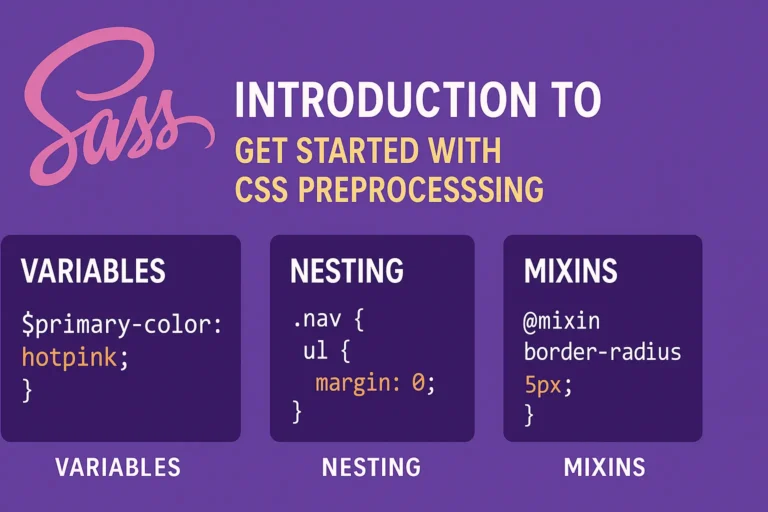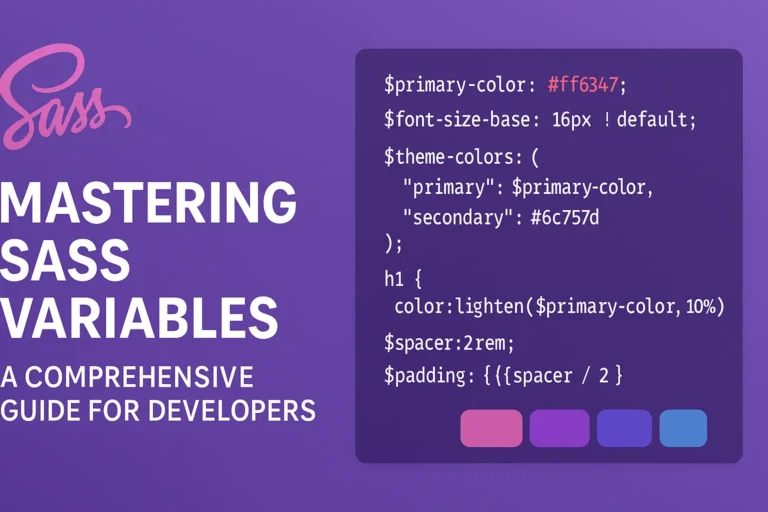One such feature is extending, which allows developers to share styles between selectors, reducing redundancy and improving code organization. In this article, we’ll delve into the @extend directive in SASS, its usage, benefits, pitfalls, and when to use it effectively.
The @extend Directive
The @extend directive in SASS allows one selector to inherit styles from another selector. This mechanism promotes code reusability and maintains a cleaner stylesheet structure.
Inheritance of Styles
Let’s consider a scenario where we have two elements with similar styles:
// Define a base class
.base-style {
color: #333;
font-size: 16px;
}
// Extend the base style
.extended-style {
@extend .base-style;
font-weight: bold;
}
In this example, the .extended-style selector inherits styles from .base-style, resulting in concise and DRY (Don’t Repeat Yourself) code.
Placeholder Selectors vs. Classes
SASS offers placeholder selectors, denoted by %, which are similar to classes but not rendered in the final CSS output unless extended. Placeholder selectors are handy when you don’t want the base styles to be applied unless explicitly extended.
// Define a placeholder selector
%base-style {
color: #333;
font-size: 16px;
}
// Extend the placeholder selector
.extended-style {
@extend %base-style;
font-weight: bold;
}
By using %, we ensure that .base-style doesn’t generate CSS unless extended, reducing output bloat.
Selector Inheritance
SASS allows extending complex selectors, not just class names. This feature enables inheriting styles from compound selectors, pseudo-classes, and even parent selectors.
// Define a parent selector
.nav {
background-color: #f1f1f1;
padding: 10px;
}
// Extend the parent selector
.nav__item {
@extend .nav;
color: #333;
}
Here, .nav__item inherits styles from .nav, resulting in a more efficient stylesheet structure.
Pitfalls and Limitations of Extending
While extending offers significant benefits, it’s essential to be aware of its limitations and potential pitfalls.
Specificity Issues:
Extending can lead to increased selector specificity, potentially causing unintended styling overrides.
Output Size:
Extending can generate larger CSS output, especially when extending placeholder selectors extensively.
Maintenance:
Overusing extending can make the stylesheet harder to maintain, as it may become unclear where styles originate from.
When to Use @extend
@extend should be used judiciously to maximize its benefits while mitigating its drawbacks. Here are some scenarios where @extend is particularly useful:
Repeating Styles:
When multiple selectors share identical or nearly identical styles, @extend can efficiently consolidate them.
Base Styles:
Placeholder selectors are handy for defining base styles that are extended across various elements.
Maintaining Consistency:
Extending can help ensure consistency in design elements across the website or application.
Conclusion
Extending in SASS is a powerful feature that promotes code reusability and maintainability. By leveraging the @extend directive wisely, developers can streamline their stylesheets, reduce redundancy, and enhance the scalability of their projects. However, it’s crucial to understand its limitations and exercise caution to avoid potential pitfalls. With a balanced approach, extending can significantly improve the development workflow and the overall quality of CSS codebases.






